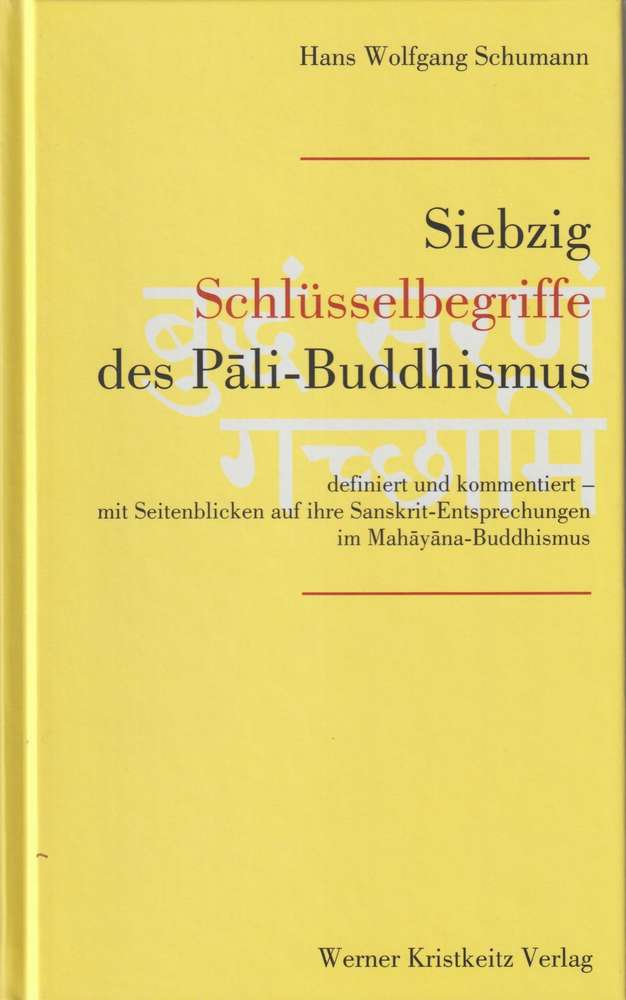Seventy key concepts of Pali Buddhism
by Hans Wolfgang Schumann12,90 €
incl. 7% VAT plus Shipping costs
Werner Kristeitz Publishing House , Heidelberg 2006
Hardcover, 99 pages
Even those who do not want to translate from Pali, but want to understand the translated teachings of the Buddha correctly, need a basic stock of Pali terms. It took one hundred and fifty years until the indological research had gained a clear picture of the great Indian doctrine of salvation and for some key terms the discussion is still going on. This book deals with them. It is intended as a supplementary dictionary of Pali Buddhism, but it does not treat the key terms in a lexically concise way, but in the form of essays in some breadth. Some of these terms stand in several, interlocked factual contexts and cannot be translated by a single German word.
The Buddhist doctrines, which emerged after Pali Buddhism, have taken over many mountain terms from Pali and partly developed them further, partly filled them with new meanings. The work is also devoted to these new interpretations in Sanskrit Buddhism. Philosophically and historically, it is fascinating to see how concepts and ideas evolve from Theravada Buddhism to Mahayana.
The introductory part of the book describes how the teachings of the Buddha were codified and handed down to our time. The Buddha, as the Pali Canon (89.19 and Snip 422 f.) confirms, came from the ancient Indian kingdom of Kosala and spoke Kosli as his mother tongue.
Out of stock
SKU: 10000005
Categories: Books, Buddhism General, Gelugpa / Mahayana
similar products
-
Shantideva. Living in the Spirit of Enlightenment
from Shantideva 17,00 € -
Meditation Sutras of Mahayana Buddhism. Volume 1
29,65 € -
Introduction to the Middle Way
by Herg.Alex Trisoglio 37,90 € -
Ultimate vision and meditation
by Tsele Natsok Rangdröl 19,90 € -
Heart Teachings for the Buddhist Path . Volume 2
14,90 € -
The way of the gentle warrior
by Geshe Yeshe Tobden 27,00 € -
Compassion for yourself, others and the world.
from Yesche U.Rule 22,00 € -
The great path of awakening
by Sönam Lhündrup 28,90 € -
Heart Teachings for the Buddhist Path . Volume 1
14,90 €










